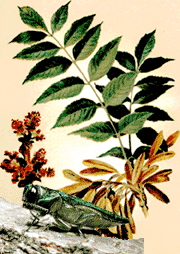|
||
Way DownstreamIn Maryland, the state’s first memorial to Dr. Martin Luther King Jr. — on the campus of Anne Arundel Community College — will soon be easier to find for drivers on Route 2. Carl Snowden, chair of the Dr. Martin Luther King Jr. Committee that created and funded the memorial, proposed during the Dr. Martin Luther King Jr. Memorial Breakfast at the college on Jan. 15 that signs be erected on the highway directing the way to the memorial. House Speaker Michael Busch has agreed to help make it happen … In Virginia, the feds are beginning forfeiture proceedings to dispose of some 50,000 undersized soft crabs seized in Crisfield last fall, the Crisfield Times reports, many apparently taken illegally in Maryland. Feds posing as seafood dealers from West Virginia said they wanted the “pee-wees” for bars and restaurants. The minimum size limit is 4 inches in Maryland, 3.5 in Virginia … On the Water, the magazine Seaworthy has shined a light on why boats sink by examining accident claims of Boat U.S. members. According to the findings, outboard powerboats sink primarily because of poor cockpit design. But inboard-outboards’ chief problem is the bellows, the delicate connection between the inboard engine and the outdrive. Results: Dock sinkings: • 44%: Leaking bellows • 23%: Failure of below-waterline fitting, hose clamps and melted hoses from overheating • 15%: Failure of above-waterline fittings • 11%: Docking problems • 6%: Forgot to put in drain plug • 1%: Miscellaneous Sinkings while underway • 36%: Struck a submerged object such as rocks or logs • 24%: Failure of below-waterline fittings • 20%: Leaking bellows • 12%: Swamping • 8%: Miscellaneous Our Creature Feature is a true story from China, the source of the emerald ash-borer, the voracious green devils that have begun laying waste to Maryland’s ash trees. The Maryland Department of Agriculture announced this week that it had begun cutting infected trees in the Clinton/Brandywine area of Prince George’s County and was taking other strong measures, including prohibiting the removal of firewood from the county. The problem is serious and potentially costly. Ask people in Michigan, Ohio, Indiana and Illinois, where fighting the borer and removing dead and dying trees has cost taxpayers tens of millions of dollars. Authorities are all but certain that the half-inch-long slim, translucent beetles arrived in the United States in the mid-1990s as stowaways on raw wood pallets from China containing the cheap goods that were beginning to be spread by Wal-Mart and others. The Animal and Plant Health Inspection Service in the U.S. Agriculture Department last year banned raw bark Christmas trees from China after related boring beetles were discovered in several states. But federal agriculture inspectors have been hamstrung in their fight as a result of new Customs and Border Protection policies that put the biggest priority on stopping terrorists, not bugs. Bay Gardener Frank Gouin, University of Maryland professor emeritus, said he believed that agriculture inspectors are doing a good job locating infected trees. “Ash trees are not common in the coastal regions, but it is a beautiful tree where it grows and every effort should be made to eradicate the problem,” he said. The Nature Conservancy, however, fears the problem — more than six million potential host trees — is too big for Maryland to manage. “The state faces the loss of millions of trees and dollars,” Director of Forest Health Programs Frank Lowenstein said in a statement recommending the U.S. Department of Agriculture make $3.7 million in Commodity Credit Corporation emergency funds available. |
||
|
|
||
|
© COPYRIGHT 2004 by New Bay Enterprises, Inc. All rights reserved.
|


